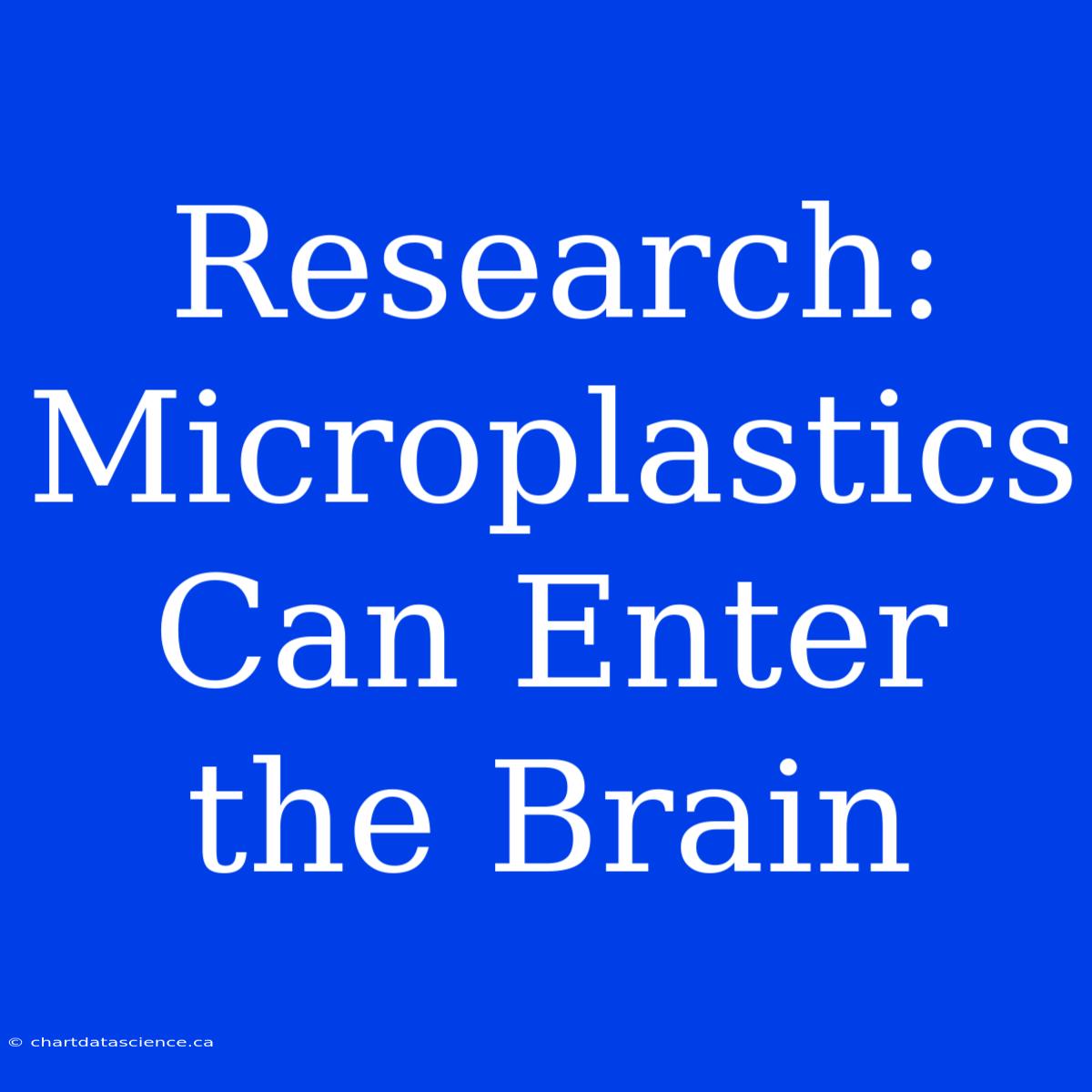Research: Microplastics Can Enter the Brain - A Scary New Reality
We all know about microplastics polluting our oceans and food, but did you know they can now be found in the human brain? It's a terrifying thought, right? This recent research has sent shockwaves through the scientific community and beyond, raising serious questions about the potential impact on our health.
What is Microplastic, and How Does it Enter the Brain?
Microplastics are tiny plastic particles less than 5 millimeters in size. They come from various sources, including plastic waste, clothing fibers, and even cosmetics. We're constantly exposed to them, inhaling them, ingesting them through food and water, and even absorbing them through our skin.
Recent research has shown that these microplastics can enter the brain through various pathways, including the olfactory bulb, which processes smell information. This means they can potentially bypass the blood-brain barrier, the protective layer that usually shields the brain from harmful substances.
The Implications of Microplastics in the Brain
While the full impact of microplastics in the brain is still being investigated, there are some worrying possibilities:
- Neurotoxicity: Microplastics could potentially interfere with brain function, leading to neurodegenerative diseases like Alzheimer's or Parkinson's.
- Inflammation: These particles could trigger inflammation in the brain, increasing the risk of various neurological disorders.
- Disruption of Brain Development: Exposure to microplastics during critical developmental stages could disrupt brain development and function.
What Can We Do About It?
The research on microplastics in the brain is still in its early stages, but it highlights the urgent need for action. Here are some steps we can take:
- Reduce plastic use: Choosing reusable alternatives, avoiding single-use plastics, and supporting sustainable packaging options can reduce our overall plastic footprint.
- Support research: Funding research on microplastics and their impact on human health is crucial to understanding the risks and finding solutions.
- Advocate for policy changes: Governments and industries need to take proactive steps to reduce plastic pollution and protect public health.
The discovery of microplastics in the brain is a stark reminder of the pervasive nature of plastic pollution and its potential impact on our health. We need to act now to mitigate the risks and safeguard our future.

